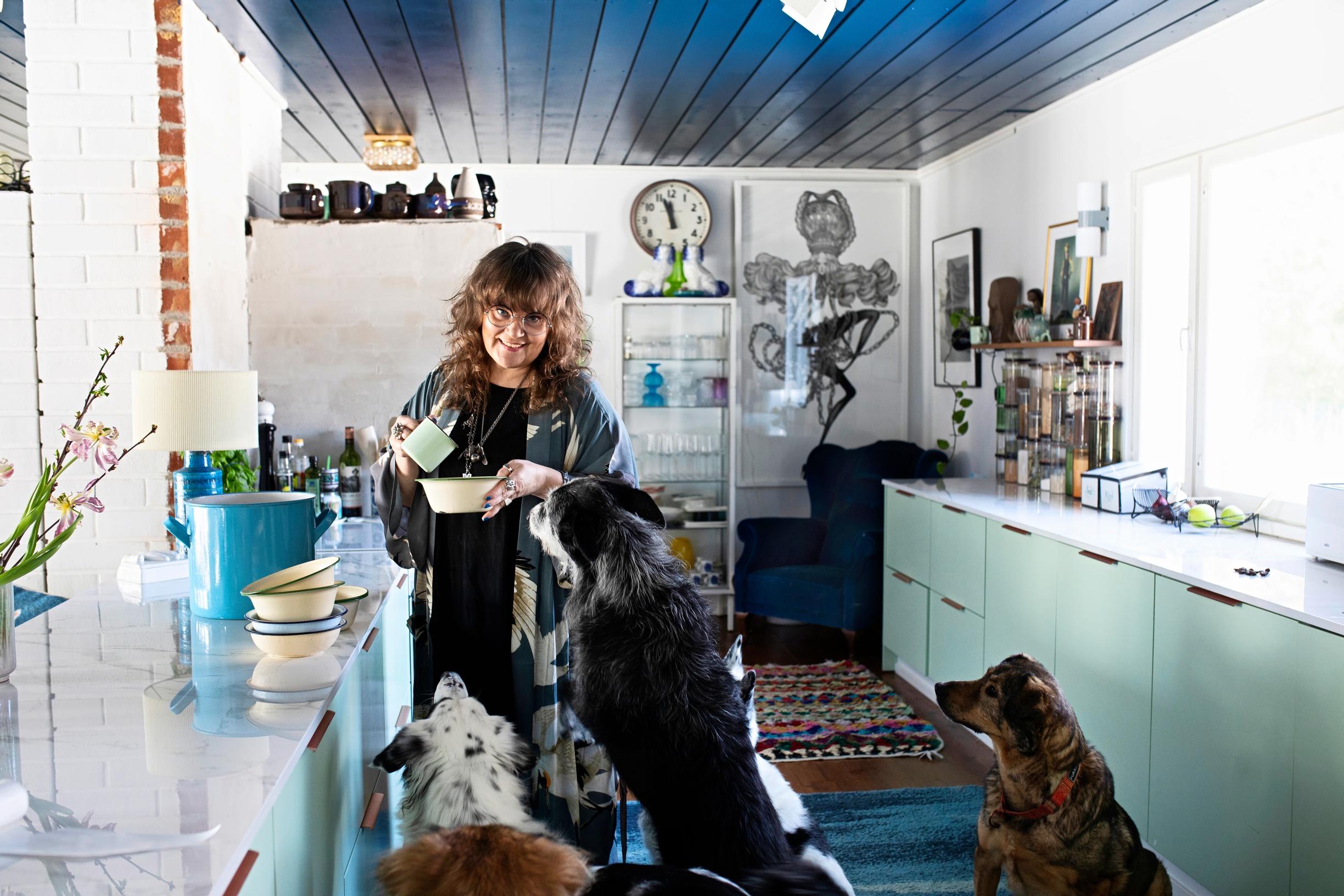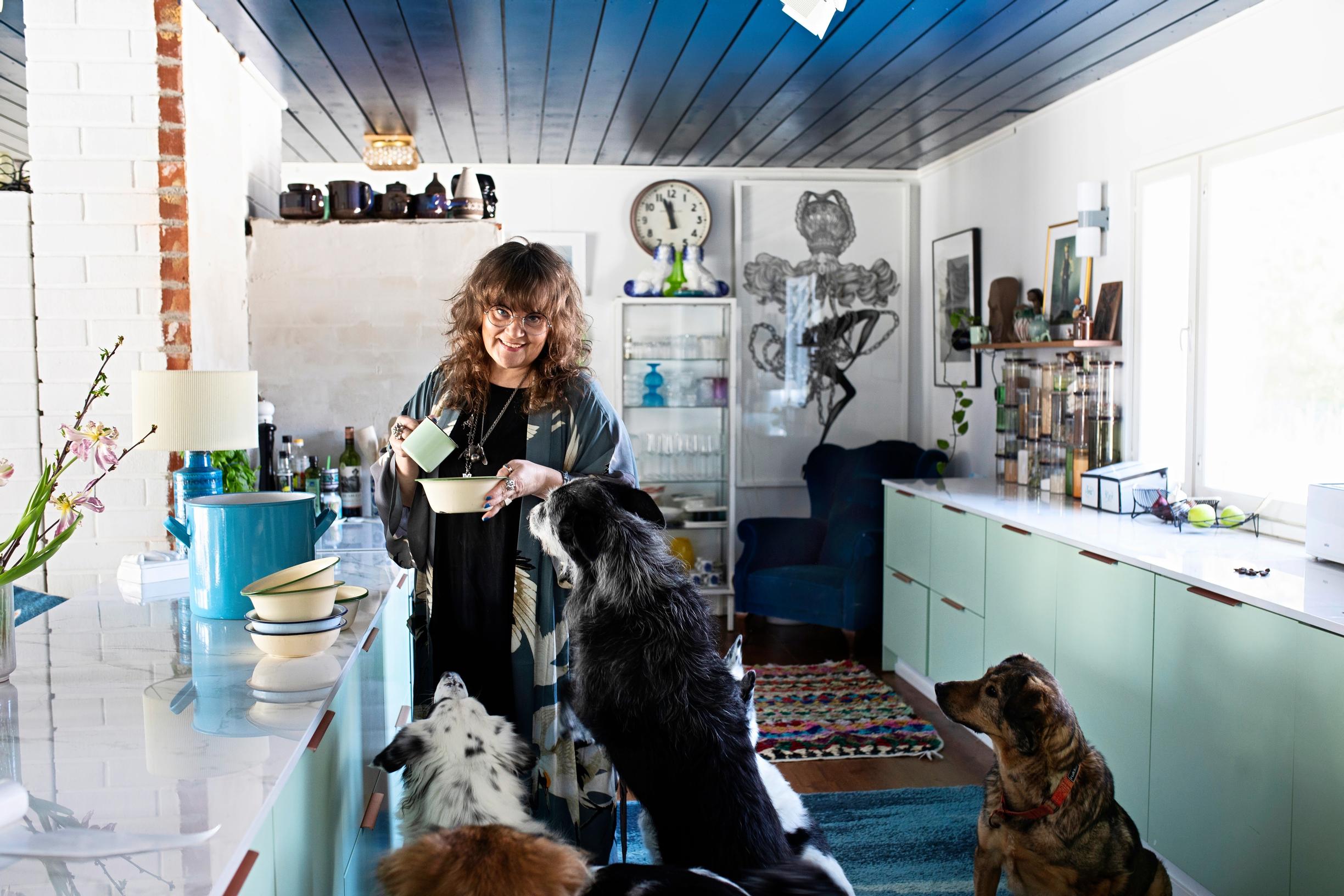
Heli’s hospice for homeless dogs: “Every life is worth saving”
Heli Mäenpää, 52, adopts old, sick, and abandoned dogs that no one else wants. “I take the dog that needs me, not the one I want,” she says.
A long winter at a cottage in Karjalohja, Southern Finland, was turning into spring. During the past months, Heli Mäenpää had carried hundreds of liters of water from the parking lot to the cottage’s main room. She had cleared the snow, chopped wood, and day after day lit the fire in the cottage stove.
When the sun finally began to thaw the solidly frozen steps leading up to the cottage, Heli knew her fears had been unfounded. Of course she could live in the countryside with her dogs, even without a partner.
So she began searching for her dream home.
The criteria were clear:
No neighbors within hundreds of meters, a large garden, outbuildings that could be heated and used as guest rooms or for animals, a house that would be aesthetically astonishing and ready to use with minor renovations, and all of this about an hour’s drive from Helsinki.
When she found a place that fit the criteria in Salo six months later, Heli made an offer. This marked the beginning of Heli’s long-standing dream, a hospice for homeless and sick rescue dogs, becoming reality.

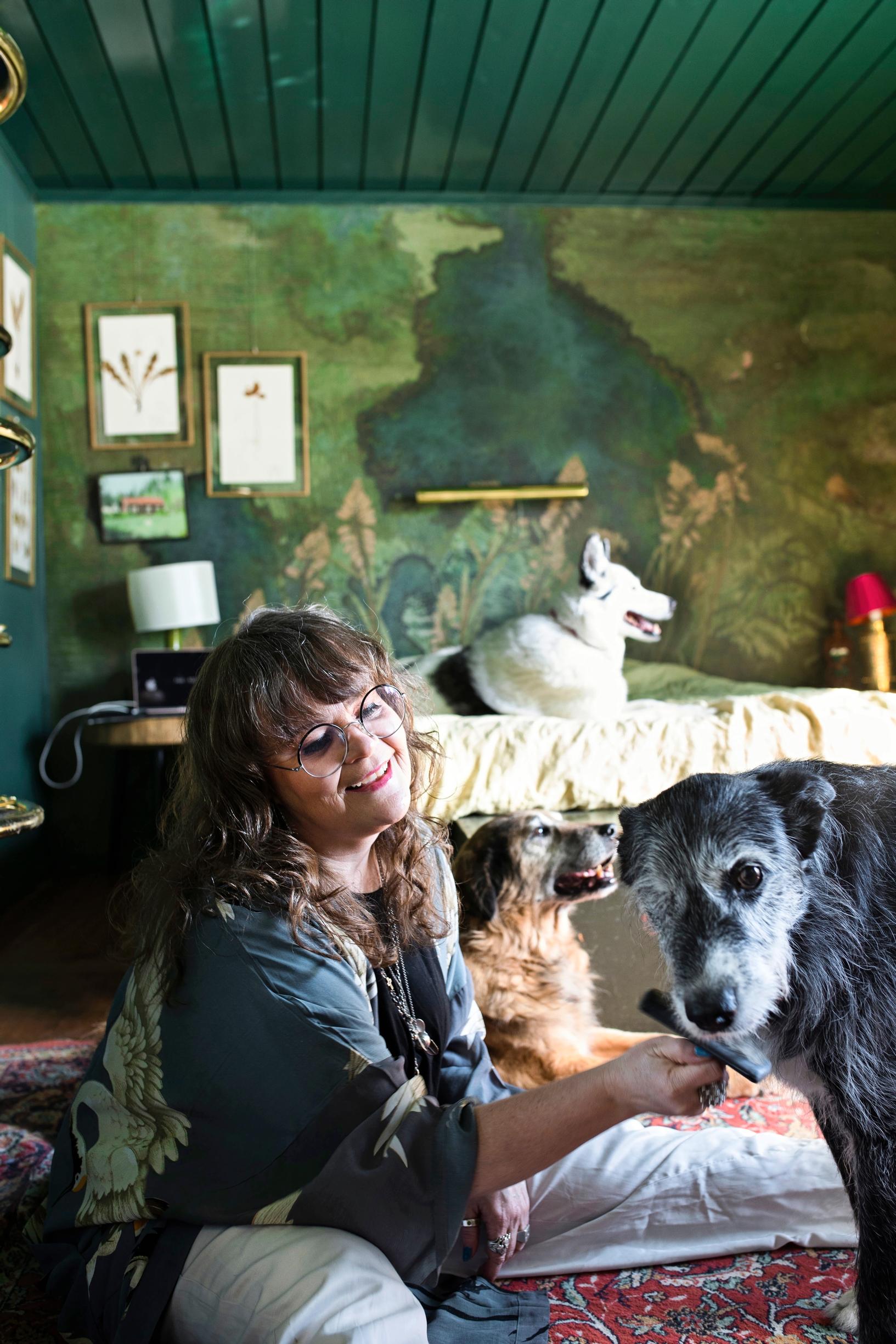
Every dog deserves a home
Heli closed on the house purchase in July 2019. Her story with dogs in need of help began decades earlier.
Heli’s love for dogs goes back as far as her childhood. Her parents agreed to get a small and sociable Pekingese. After moving out on her own, Heli took a break from dogs while studying, but after graduating with a degree in graphic arts at the age of 26, she felt ready for a dog again.
Heli contacted a dog breeder. She knew that among newborn Dalmatian puppies, colored patches are not accepted—they are considered a disqualifying fault in the breed standard. According to Heli, breeders don’t want these pups to show on the registers of the dogs they use for breeding, so they get rid of them. But to Heli, even a dog like that would be valuable.
And so Heli’s first dog, Lempi, came into her life.
I didn’t want cages and kennels; I wanted the dogs to live in my home as full-fledged family members. Some of my friends thought I was completely nuts.
Lempi and Heli lived in the Kallio district of Helsinki, where they spent Heli’s lively years of working in advertising and partying from the late 1990s until the 2010s. When Lempi died at 15 in 2012, Heli decided she would never again get a purebred dog.
At that time, adopting homeless dogs had already become a well-organized activity. That’s how Heli’s first rescue dog, Leika from St. Petersburg, came into her life. A year later, she adopted a second: Bambi, who was in poor condition after being hit by a car in Romania.
Her dream of a hospice for several elderly or sick rescue dogs took shape gradually.
“It was clear to me that once I moved to the countryside, I could keep six to eight dogs. I didn’t want cages and kennels; I wanted them to live in my home as full-fledged family members. Some of my friends thought I was completely nuts.”
The only real obstacle was that Heli didn’t think she could manage it alone. A single woman, a pack of dogs, an entire house somewhere in the countryside—how could she cope with it all? But buying the cottage in Karjalohja was the first step toward her dream. She felt at ease there.
“Around the same time, I stopped doing things that weren’t good for me. That’s when it started to become clear what I wanted to do with the rest of my life.”
After surviving that chilly winter at the cottage, Heli knew she was ready for the challenge. When May came, she rented out her Kallio apartment, moved most of her belongings into a storage unit, and moved with her dogs to the cottage. She wasn’t going back to the city.

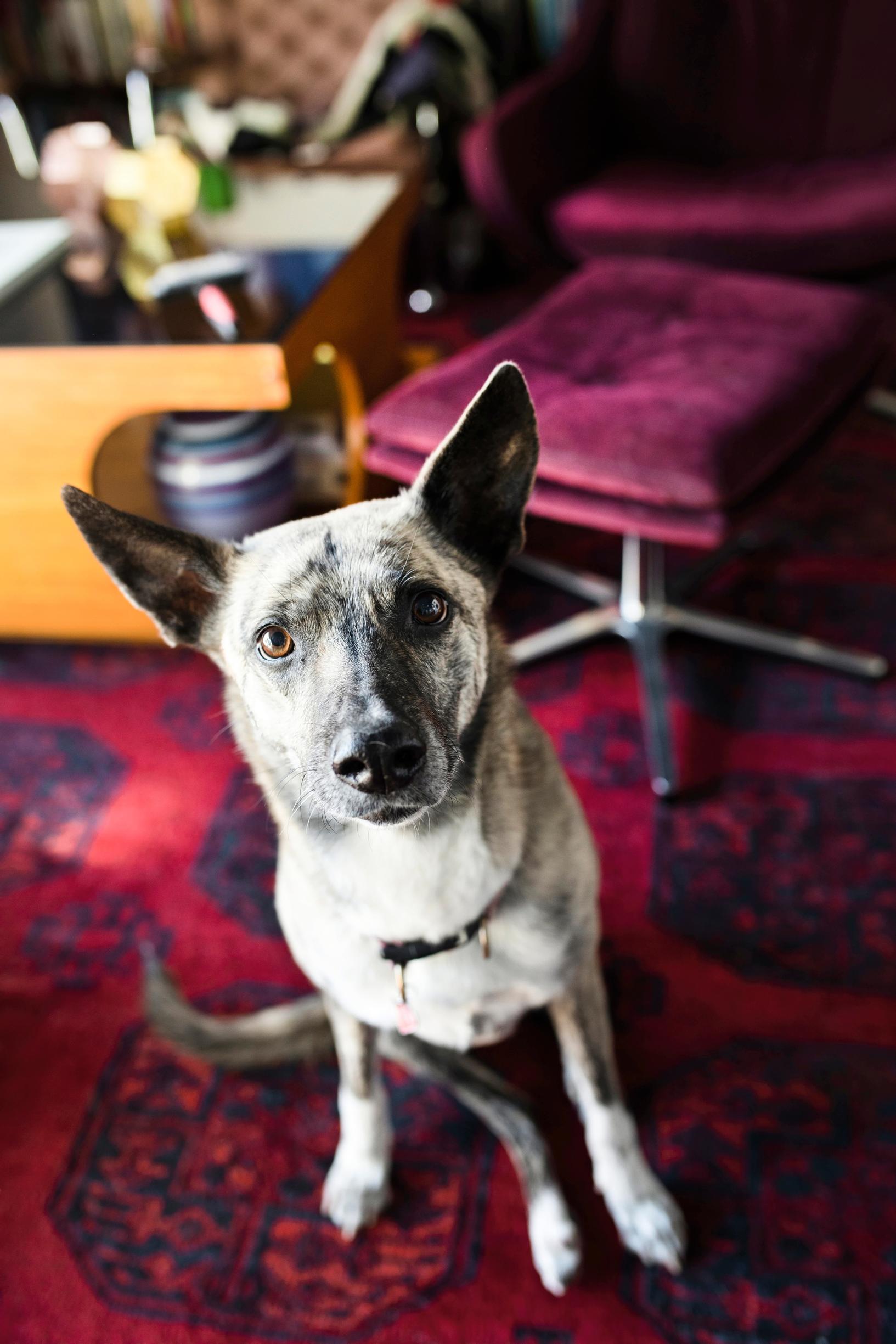
A new everyday life takes shape
Heli looked for a house about an hour’s drive from Helsinki. Her work as a producer, lecturer, and marketing and branding expert would still bring her there, as would her social life. She knew she would be traveling to Helsinki weekly.
When nothing turned up in the Lohja area, Heli expanded her search toward Salo. That’s where she finally found what she was looking for.
A recently renovated late-1970s house perched on a hilltop wasn’t especially interesting in itself—really “pretty basic”—but the surroundings were breathtakingly beautiful. The small windows facing the lake could be replaced with floor-to-ceiling sliding doors. Heli could picture herself gliding in and out through those open doors with her dogs once summer arrived.
She viewed the house on a Tuesday. By Thursday, she had made an offer.
“I had been ready for a long time, and when I found the house, it didn’t take a second thought for me to leave Helsinki.”
In early August, Heli began renovating. In the Salo house, walls were opened up for the sliding doors she had envisioned, internal walls were moved, and surfaces were painted.
When the renovation was completed in November, it was time to expand the pack.
For instance, I found Serge really annoying at first, but he’s become a tremendous love in my life.
Serge arrived from Moscow five days after the move. Three months later came Lucky, then Mortti. After that Alma, Siro, and most recently Valo. Three of the dogs are from Romania, two from Russia, and three from Finland.
Heli adopts old, sick, and abandoned dogs that no one else wants. Along with the ones found through rescue organizations, the pack includes Mortti the husky, who was given up in northern Finland when sled-dog rides for tourists stopped during the pandemic.
When a new dog arrives, Heli gives it time to settle in and become a member of the pack. Only then is there space for the next. For now, the pack is complete.
“I take the dog that needs me, not the one I want. For instance, I found Serge really annoying at first, but he’s become a tremendous love in my life.”
Life with eight dogs requires commitment and planning. There’s a dedicated chest freezer for the dogs’ food, and you need to budget about 1,000 euros per dog per year for vet bills. Heli says they could go out for walks all day long, and the dogs would still want more. It doesn’t help that one dog will only walk in the forest, while another won’t step foot there at all.
Social life also takes planning and precise scheduling. If Heli will be gone for more than a couple of hours, the dogs need sitters. She has found help via Instagram, where she has thousands of followers. Among them are people who occasionally come by and walk the dogs. She also has friends and followers who regularly travel hundreds of kilometers to take the dogs out and who can also care for the pack overnight if Heli has a longer engagement.
“The house is nice, and the property has its own shoreline and a barrel sauna. It’s a chance to enjoy a bit of country living.”
Heli dreams of having more dogs, and hiring staff to help care for them. Right after moving to Salo, she established the Stray Dog Cabaret association to run the hospice.
“I wanted the operation to be official and professional. For now, the association mostly runs on my own money, but it could apply for a fundraising permit in the future.”
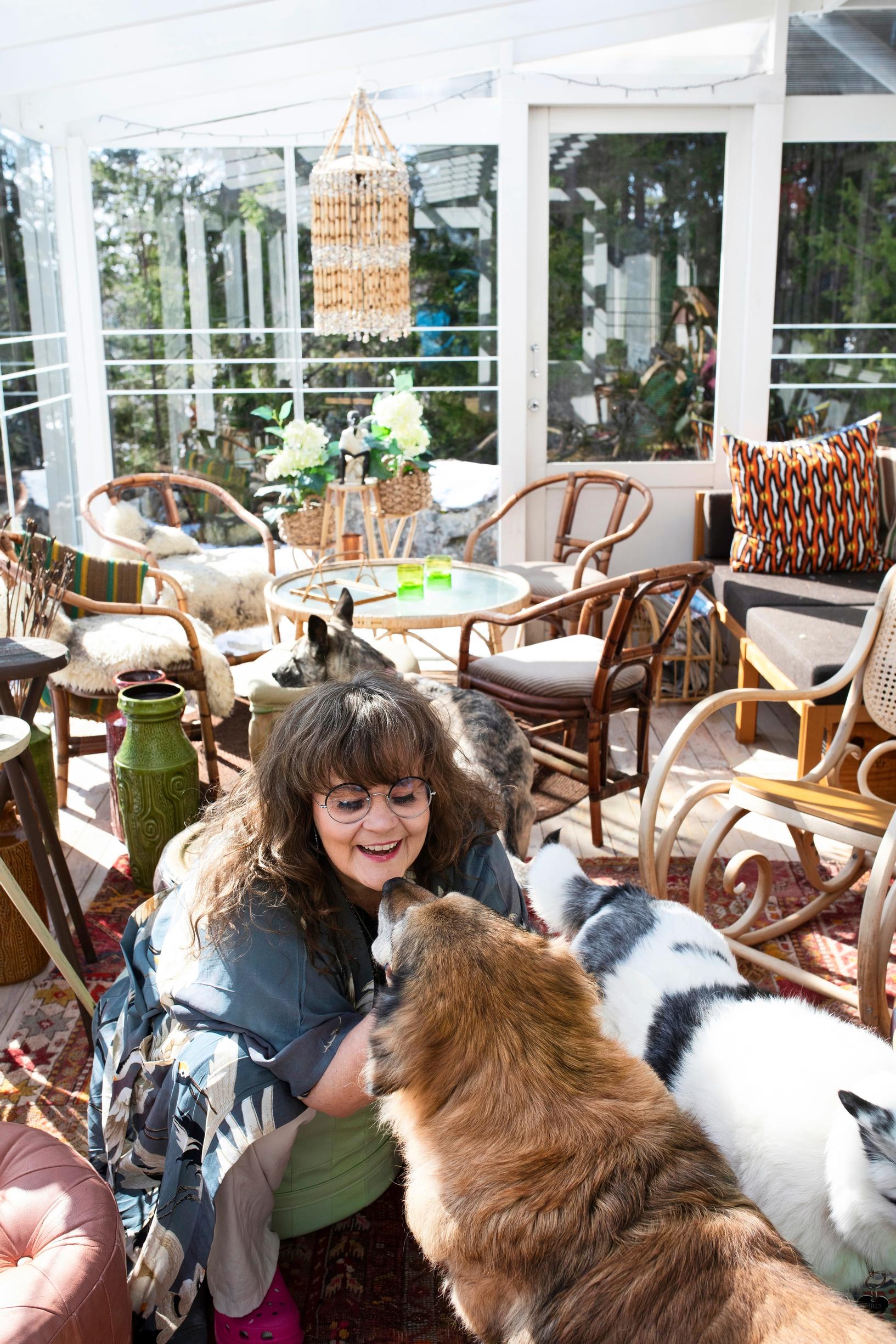
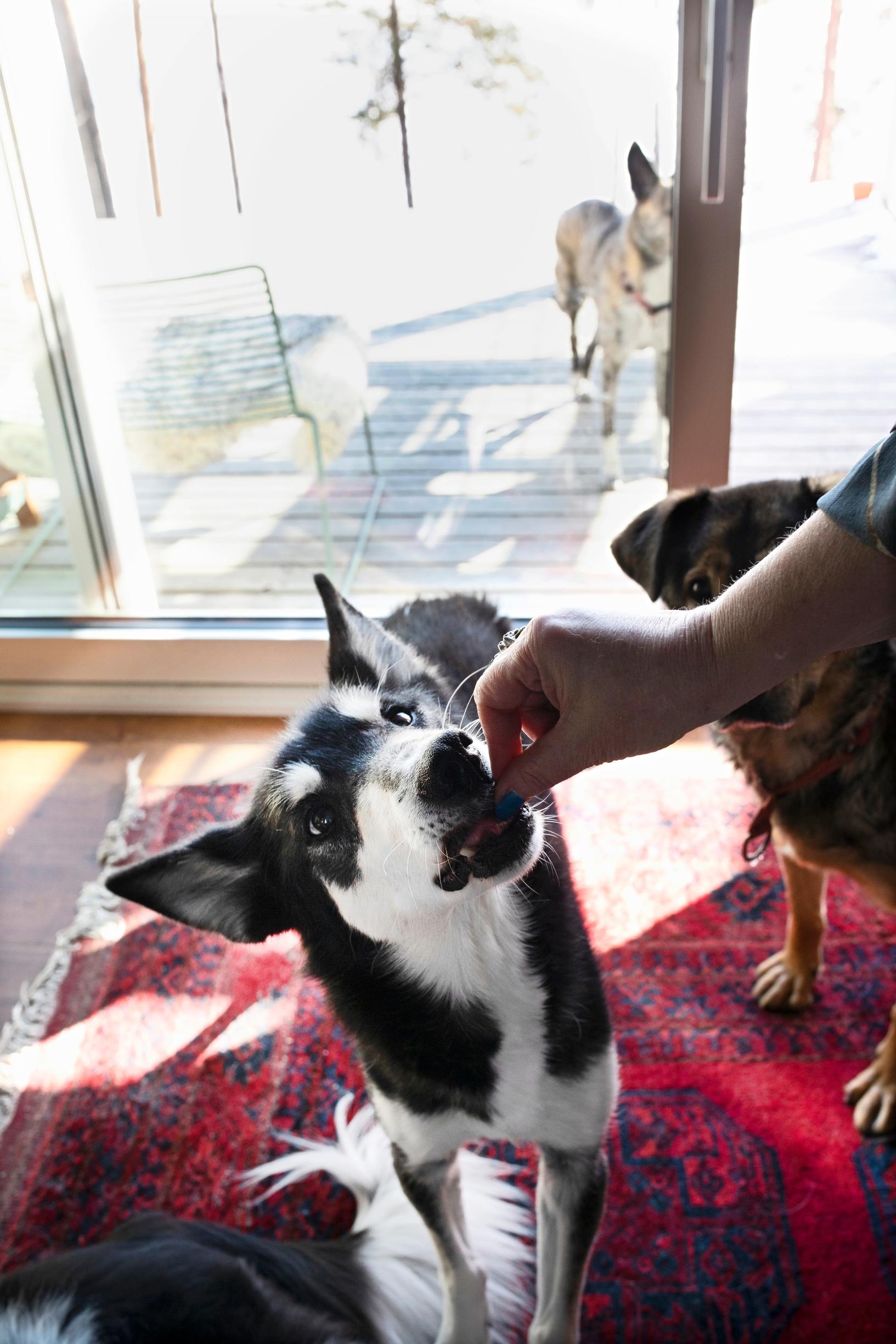
You don’t have to manage alone
Through social media, Heli has gained many followers, and she wants to be a good role model for them. She has received messages from people who’ve ended up adopting homeless dogs instead of buying them, just like she has.
At the same time, she hopes she can share something about making dreams a reality.
“I realize I’m privileged to be able to work remotely and set my own schedule, and that I could afford a place like this. Still, I think everyone can help in some way.”
The years in Salo with her own pack have also taught her about getting by. Heli has disproven her own assumptions.
“I once thought I wouldn’t dare move to the countryside alone because I’d have to be able to do everything myself. That was a really silly thought. I can manage just fine, because I can ask for help if I need it.”
Heli is grateful for the helpfulness and flexibility of the small local businesses. If the house runs out of heating oil on a freezing night, the electrician she knows will show up with canisters first thing in the morning.
Things work out. Country life isn’t the same kind of challenge Heli faced during that solitary, rustic winter at the cottage.
